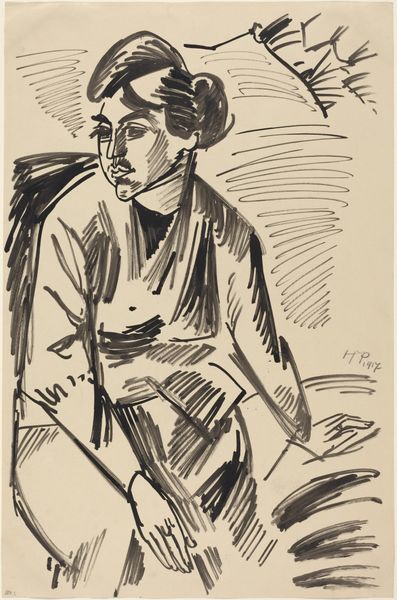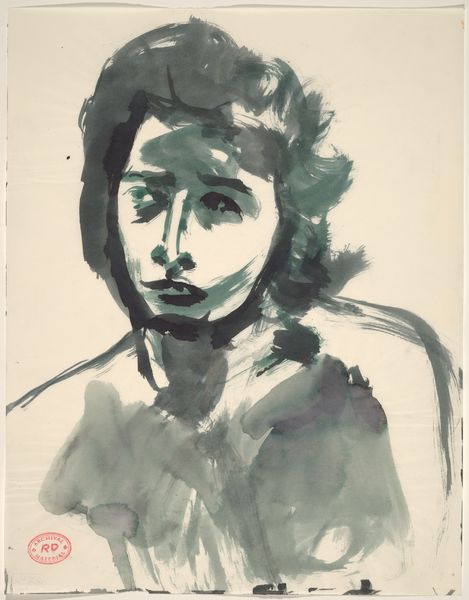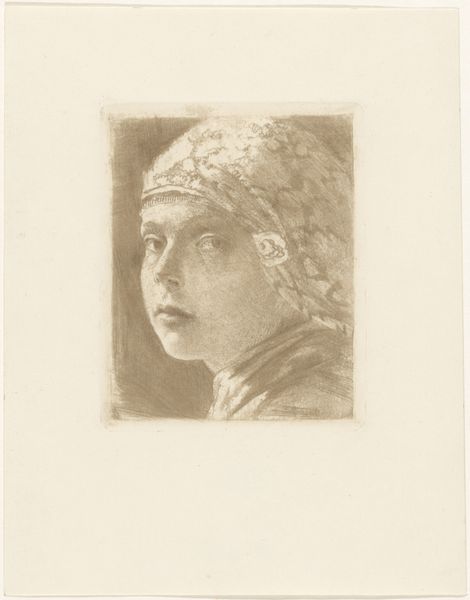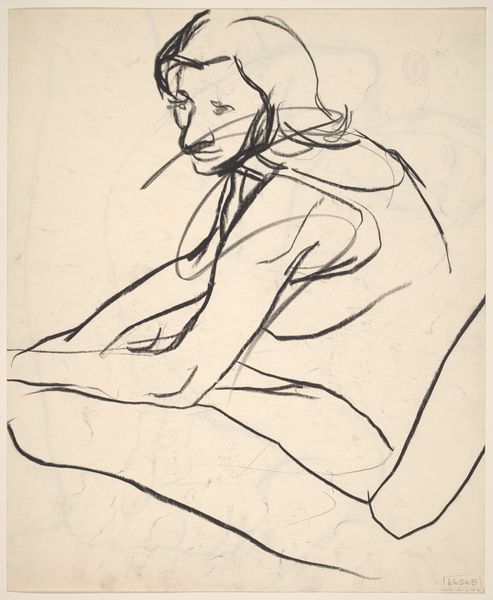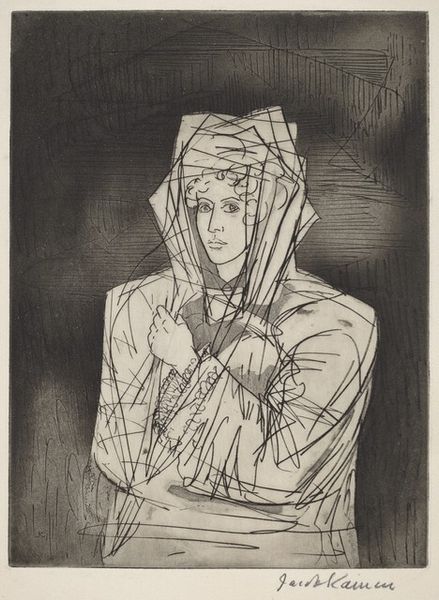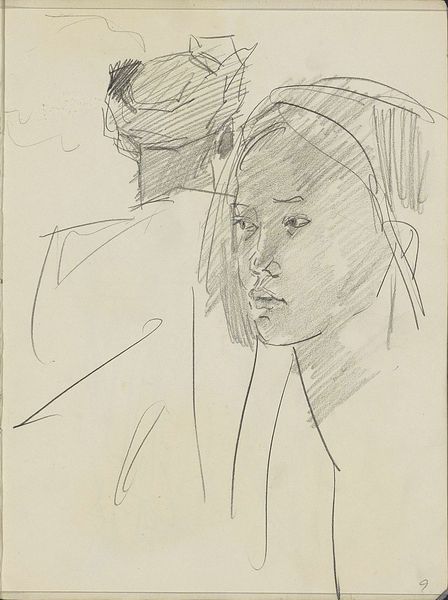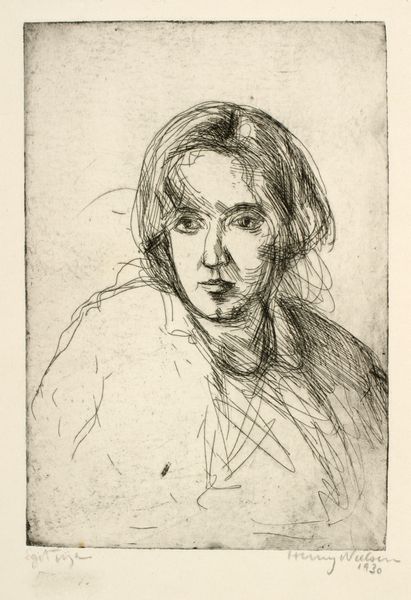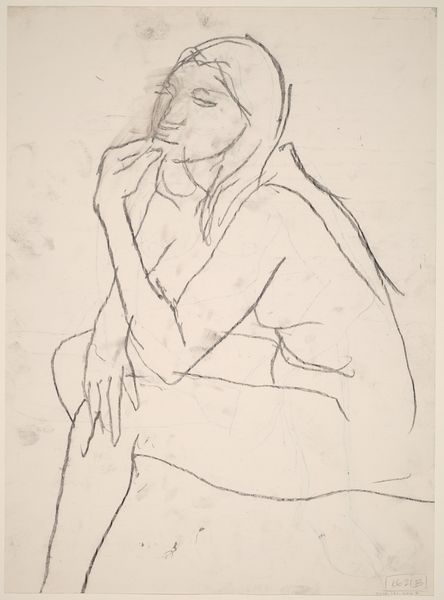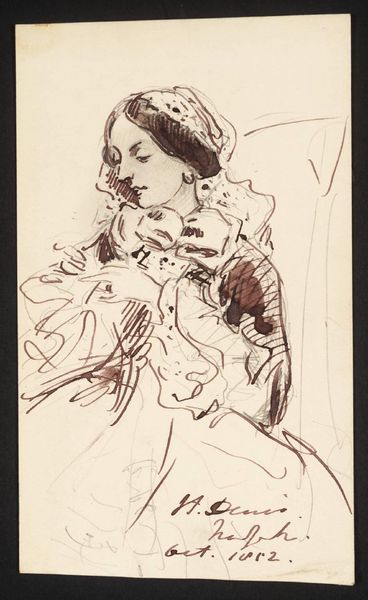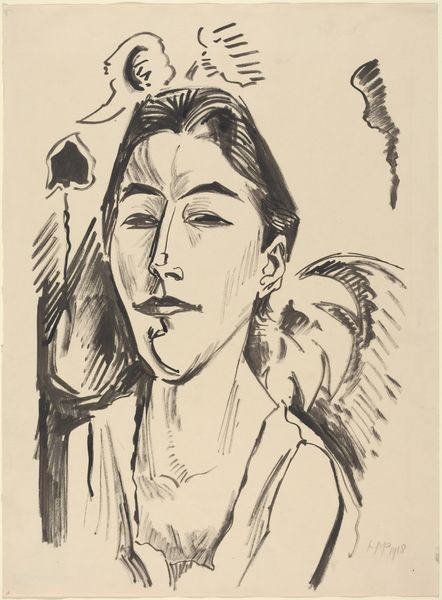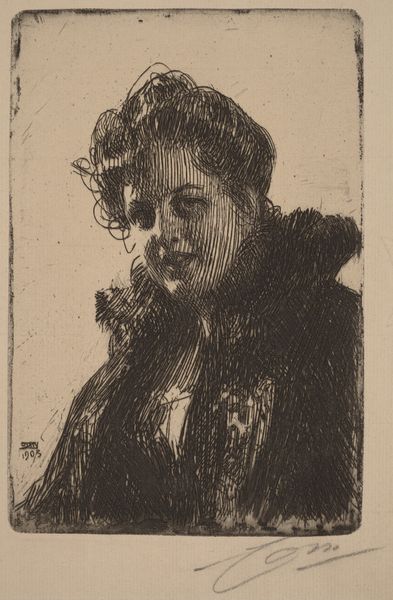
Copyright: Public Domain
Editor: So, here we have "Girl with Hat and Scarf" by Hermann Lismann, made with ink on paper in 1907. The bold, almost frantic, lines give the portrait such an immediacy, don't you think? What story do you think Lismann is telling here? Curator: I see the anxieties of early 20th-century Europe reflected in that very immediacy. This was a time of immense social and political change. Expressionism, as a movement, was rising precisely because artists felt the need to convey raw emotion. Look how Lismann used harsh lines to almost dissolve the form; what does that suggest about societal pressures on identity, particularly on young women? Editor: I hadn't considered the dissolution of form as a reflection of social pressure. I was more focused on the composition, which seems quite standard for portraiture of the era. Curator: Standard in its representation, perhaps, but what is communicated goes beyond that. Note how Lismann’s choice of stark black ink emphasizes the subject’s vulnerability within a rapidly industrializing society. The scarf and hat could be interpreted as attempts to protect oneself against these changes, or perhaps signal her assimilation to new urban fashions. How might this contrast with portrayals of women from, say, the Renaissance? Editor: Well, Renaissance portraits often presented women as idealized figures, symbols of stability. This girl looks far less secure, more like an individual navigating a chaotic world. It seems so modern, really. Curator: Exactly! This shift from idealized representation towards portraying individual experiences speaks volumes about the changing public role of women and the anxieties surrounding that shift, especially as art became more accessible through public museums and galleries. Editor: This conversation's really altered my perspective. Seeing the work through a social lens highlights what it was trying to convey in its historical context. Curator: It reveals how art serves as both a product of and a commentary on society. I wonder how future audiences will read our own art?
Comments
No comments
Be the first to comment and join the conversation on the ultimate creative platform.

